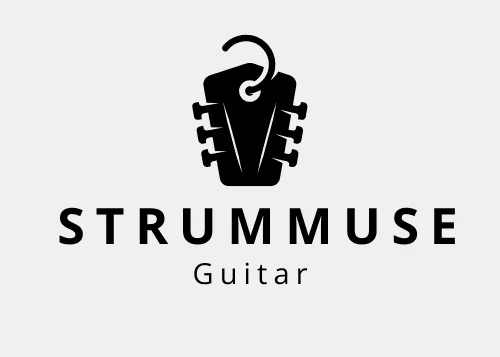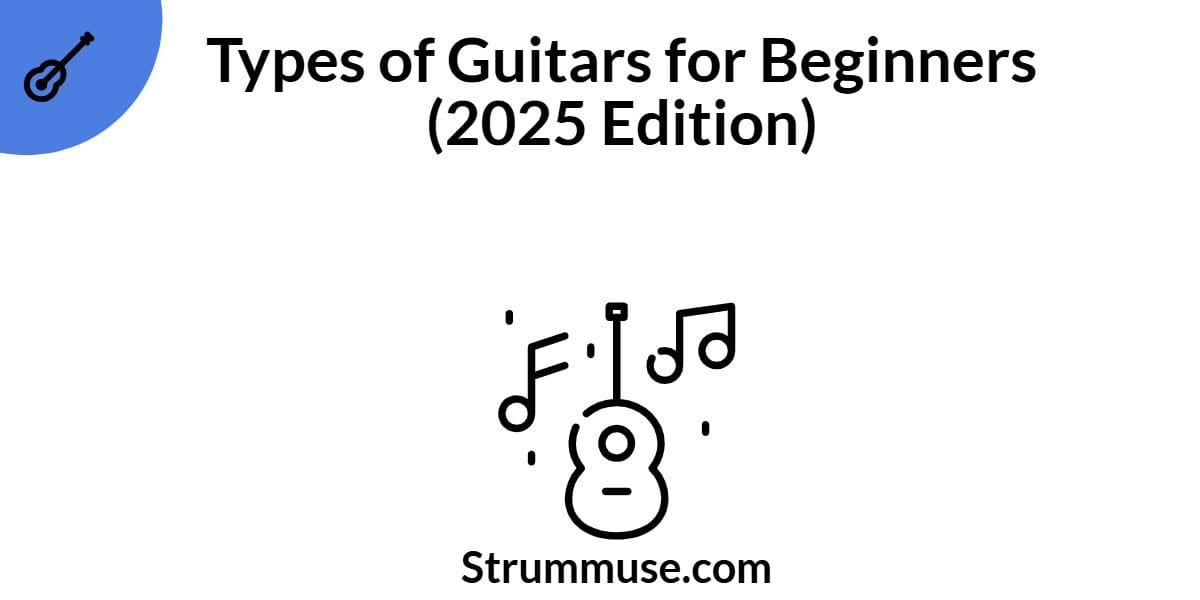Whether you’re about to buy your first guitar or just curious about what’s out there, understanding the different types of guitars is a great place to start. I remember when I first walked into a music store—I was completely overwhelmed by the variety. Acoustic, electric, classical, bass, 12-string—what did it all mean?
This beginner-friendly guide will help you decode the world of guitars. We’ll break down each types of Guitars, their unique features, and what they’re best suited for so you can make a confident choice in 2025.
1. Acoustic Guitar: The Classic Beginner’s Favorite
Overview: The acoustic guitar is the most common starting point for beginners. It produces sound naturally through its hollow wooden body—no amp needed.
Types:
- Steel-string acoustic: Bright, loud tone (used in pop, folk, rock)
- Nylon-string classical: Softer, warmer sound (great for beginners and classical music)
Best For:
- Singer-songwriters
- Beginners
- Campfire jams
Pros:
- No need for extra equipment
- Readily available
- Great for rhythm and strumming
Cons:
- May feel harder to play than electric for some beginners
2. Electric Guitar: The Rocker’s Choice
Overview: Electric guitars require an amplifier and are ideal for a wide range of genres, especially rock, metal, jazz, and blues. They have thinner bodies and strings, which can be easier on the fingers.
Key Features:
- Solid body with pickups
- Volume and tone controls
- Needs an amp to be heard properly
Best For:
- Aspiring rockstars
- Players looking for genre flexibility
Pros:
- Easier to press strings
- Amazing tonal variety
- Great for solos and riffs
Cons:
- Requires amp and cables
- Can be more expensive initially
3. Classical Guitar: Elegant and Gentle
Overview: Classical guitars use nylon strings and have a wider neck. They’re excellent for fingerpicking and classical pieces.
Key Features:
- Soft nylon strings
- No pick needed (usually played with fingers)
- Smaller body, warmer tone
Best For:
- Beginners (due to soft strings)
- Classical and flamenco players
- Fingerstyle enthusiasts
Pros:
- Gentle on fingers
- Affordable options available
- Encourages good finger technique
Cons:
- Less volume than steel-string
- Not ideal for strumming-heavy songs
4. Bass Guitar: The Backbone of the Band
Overview: Bass guitars have four (sometimes five or six) thicker strings and play the low-end frequencies in a song. They’re essential in every band.
Types:
- Electric bass: Most common, needs an amp
- Acoustic bass: Hollow body, playable unplugged (though quieter)
Best For:
- Rhythm lovers
- People who enjoy groove and timing
Pros:
- Foundational for any band
- Fewer notes to learn initially
Cons:
- Heavier and longer
- Not ideal for solo performance
5. Semi-Acoustic / Electro-Acoustic Guitar
Overview: These are acoustic guitars with built-in pickups, allowing you to plug them into an amp or PA system. Best for live performers who want acoustic tone with volume control.
Best For:
- Gigging musicians
- Acoustic covers with amplification
Pros:
- Versatile
- No need for mic during performances
Cons:
- Slightly more expensive than regular acoustic
6. 12-String Guitar: Twice the Sparkle
Overview: A 12-string guitar pairs each string with a partner, creating a lush, full sound. Often used in folk and rock ballads.
Best For:
- Intermediate players
- Sound layering and studio work
Pros:
- Beautiful, rich tone
- Ideal for jangle-pop and ambient styles
Cons:
- Harder to press strings
- More tuning required
Which Guitar Should You Choose as a Beginner?
Here’s a quick cheat sheet:
- Total beginner with interest in Bollywood, pop, or folk? Start with a steel-string acoustic.
- Want something soft on your fingers? Try a classical guitar.
- Dreaming of solos and distortion? Go for an electric guitar.
- Want to play in a band? Choose a bass guitar.
It all depends on your goals, your music taste, and your comfort.
Author’s Note
As a lifelong guitarist and music educator, I’ve spent over a decade exploring every types of guitars imaginable. From classical training to rock gigs, I’ve helped hundreds of students find the right instrument that fits their passion and playing style. This guide is based on hands-on experience and practical insight—no fluff, just the real deal.
Related Posts
- The Ultimate Beginner’s Guide to Learning Guitar
- Guitar Finger Practice Techniques for Beginners
- How to Practice Guitar at Home Daily
FAQs – Types of Guitars for Beginners
Q: Is acoustic or electric better for beginners?
A: Both work well—it depends on your taste. Acoustic is simpler to start with, but electric is easier on fingers.
Q: Can kids learn on any type of guitar?
A: Yes, but a 3/4-size classical or acoustic is often best for young learners.
Q: How much should I spend on my first guitar?
A: You can find great beginner guitars around ₹5,000–₹12,000 ($60–$150 USD).
Q: Do I need an amp for electric guitar?
A: Yes. But you can start with a small practice amp or even an app-based solution.
Final Words
Every great guitarist started with one guitar. Don’t overthink it—choose the one that excites you the most. With practice and passion, the type of guitar won’t limit you. Your journey begins the moment you start strumming.
So, what will it be? Acoustic charm or electric fire? The choice is yours.

Hello my name is Karansingh. I’m a passionate guitarist and the creator of StrumMuse.com — your trusted guide for Hindi guitar chords, strumming patterns, and beginner-friendly tutorials. With years of personal playing experience, I break down complex techniques into easy-to-follow lessons, helping you learn guitar the fun and effective way. Whether you’re just starting or refining your skills, StrumMuse is your musical companion.
Expertise: Bollywood guitar chords, strumming patterns, fingerstyle
Experience: 5+ years of self-taught guitar learning
Trust: 100+ curated posts helping thousands of learners
Contact: karanbayas0001@gmail.com

